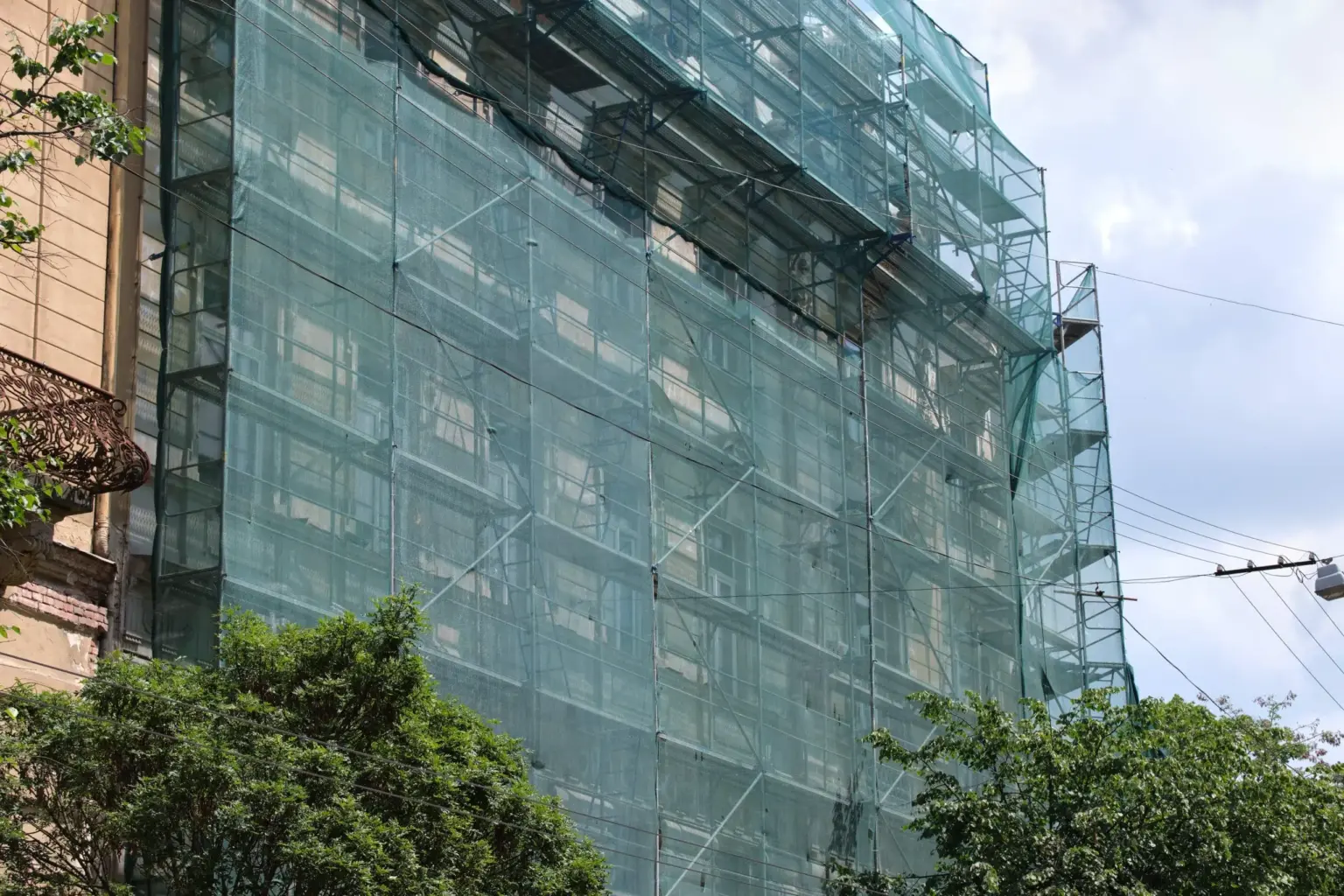Regular building maintenance prevents costly repairs and extends property lifespan. Early issue resolution saves money and enhances tenant satisfaction, protecting your investment.
Regular building maintenance is a crucial aspect of property management that often gets overlooked. By ensuring consistent upkeep, you can prevent minor issues from escalating into costly repairs, thus saving significant amounts of money in the long run. This guide will delve into the various benefits of regular building repair and how it can contribute to financial savings for property owners and managers in Australia.
Regular building maintenance is a crucial aspect of property management that often gets overlooked. By ensuring consistent upkeep, you can prevent minor issues from escalating into costly repairs, thus saving significant amounts of money in the long run. This guide will delve into the various benefits of regular building repair and how it can contribute to financial savings for property owners and managers in Australia. In addition to financial savings, regular maintenance enhances the overall safety and comfort of your property. Well-maintained buildings not only provide a better experience for tenants but also reduce the risk of accidents and liability claims. By addressing potential hazards promptly, property owners can create a more inviting environment, leading to higher tenant retention rates and increased property value. Investing in routine maintenance is not just a cost; it’s a strategy that pays off in multiple ways, ensuring both the well-being of occupants and the longevity of your investment.
Importance of Regular Building Maintenance
Regular building maintenance keeps the building in optimum condition in terms of its strength, safety, and functional efficiency. Carrying out routine maintenance is a plan of action that keeps small problems from growing into big ones without spending too much time, money, and a great deal of resources.
- Safety and Compliance
Regular building maintenance ensures that all the safety systems of a building, such as fire alarms, sprinklers, and emergency exits, are functional. It reduces the potential for mishaps and ensures that a facility is run within the bounds of the law concerning safety. Maintaining a safe environment is important to avoid physical injuries and legal liabilities.
- Cost Savings
This will detect and solve minor problems before they escalate to major ones, thereby avoiding expensive repairs. Simple routine tasks such as inspecting systems such as plumbing, HVAC, and electrical systems help in the evasion of damages and preventing loss of money.
- Enhancing Longevity
It extends the lifespan of systems and materials that are involved in the building process. These involve the electrical system, plumbing, roofing, and a number of other exterior finishes, down to the building’s façade. Proper maintenance prevents wearing down these components, enabling them to last more years and be more effective.
- Prevents Structural Damage
Testing and maintenance would be able to detect and correct these issues at the early stages of development. Such an approach will prevent serious and structural damages, saving you thousands in repair costs and guaranteeing the integrity of the building.
- Sustainability
Such sustainable practices in routine maintenance, relating to the use of eco-friendly materials and energy-efficient appliances, not only help in reducing costs but also help minimize environmental impacts. This approach will be supportive of long-term sustainability goals.
Long-Term Financial Benefits of Regular Building Maintenance
It’s always significantly worth investing in regular building maintenance in the long term. Making a commitment to routine maintenance can help property owners avoid costly repairs, improve the value of their building, achieve greater tenant satisfaction, and reap the benefits of lower operational costs. This proactive approach ensures that, over time, a property will be financially healthy.
- Avoiding Costly Repairs
Routine maintenance checks pick up minor problems and fix them before they become significant issues that will require expensive repairs. Early fixing of small issues will avoid extensive damage, hence avoiding possibly huge outlays for their restoration. For instance, repairing a minor leak in a roof can save thousands that might have been spent on repairing water damage to the interior of the building or its structural elements.
- Improved Property Value
Properly maintained properties become more attractive in the real estate market, and their value never diminishes; rather, it appreciates over time. This is because through regular maintenance, the building remains in good condition in its structure, thus making it more attractive to buyers or tenants, hence commanding better resale values and better rental incomes.
- Lower Premiums on Insurance
Most insurance companies usually charge lower premiums for well-maintained property. With regular maintenance, the risk of claims with respect to damage or failure reduces, hence saving money on insurance costs. This means that by providing for regular inspections and maintenance, the likelihood of being exposed to various risks, including those of fire breakouts, structural collapse, water wastage, etc., will be reduced, hence commanding lower premiums.
- Long-Term Preservation of Assets:
It can be defined as periodic maintenance that sustains a building as an asset by ensuring the building continues to perform effectively and remains valuable over time. Proper maintenance extends the life of building components and systems, delays capital-intensive replacements and renovations, and underscores strategic financial planning and investment. This gives the owner of a property peace of mind.
Prolonging the Lifespan of Building Systems and Materials
The prolonged life of building systems and materials contributes to the maintenance of functionality while reducing long-term costs. The routine of often maintaining good conditions within buildings for a long time can be accomplished by regular maintenance practices that include the use of quality materials and timely upgrades.
- Regular Cleaning and Inspection
Cleaning and inspection maintain the regularly acquired building systems and materials. Cleaning reduces dirt and other materials that may cause wear. In many cases, routine inspections may identify emerging issues, such as cracks, leaks, and structural weaknesses, with a system or component before they become significant defects. Addressing these minor issues before they grow into major defects will help reduce the cost of major repairs.
- Preventive Maintenance
Some of the aspects of preventive maintenance include periodic servicing, which ensures that building systems are always running at their best. It includes lubrication of the moving parts, changing worn-out components, and routine checks to ensure that no build-up or corrosion develops. For instance, routine maintenance of HVAC systems will ensure that they work efficiently and for a longer period. Similarly, preventive maintenance on plumbing systems, for example, cleaning out drains and leak testing, can avoid disastrous water damage and elongate pipes and fittings.
- High-Quality Materials Used
Repairs and replacements should be characterized by high-quality materials to ensure durability and longevity. Great roofing, paint, sealants, etc, will achieve better performances against natural elements. They are not so prone to degradation and will reduce the frequency of maintenance, thereby elongating the life cycle of the building components. The quality of the initial investment saves a lot of money in due course.
- Planned Upgrades
Updating antiquated systems and materials helps schedule different areas of the building in terms of integrity and efficiency. Upgrades to more modern, energy-efficient systems can reduce maintenance needs and operating costs. For example, new, more efficient models of HVAC units can replace old, inefficient ones to offer improved performance and reduced energy use. Similarly, updating plumbing fixtures and electrical systems allows for increased functionality and safety within a building and keeps it up to code.
Conclusion
Proper attention to regular building maintenance is a very important investment that helps in saving on expensive repairs, enhancing property value, and increasing tenant satisfaction. This can be done by ensuring that minor problems are solved timely, quality materials are used, and upgrades are arranged at the right time for functionality and safety. In consideration of this, owners can save money in the long run and extend the lifespan of building systems and materials, thereby ensuring fiscal benefits in the long term with operational efficiency.
FAQS
How does regular building maintenance save money?
Regular building maintenance prevents small issues from turning into major repairs that could be so costly. It allows fixing small problems before they require expensive correction methods, increases the life span of building systems, operates efficiently, and ensures a cheap overall cost of maintenance.
What are the key components of preventive maintenance?
Preventive maintenance consists of frequent inspections, servicing equipment, and dealing with minor repairs before they become major problems. The critical factors are frequent checks on HVAC, plumbing, electrical systems, and other similar equipment to ensure all parts are in proper working condition so money is not spent on unnecessary breakdowns and expensive repairs.
Why is using quality materials important in building maintenance?
High-quality materials for building repairs provide durability and a long life. Quality materials have better resistance to use and the elements; hence, the frequency of repairs is reduced with an extension of the life of building components, saving money in the long run.
How can technology aid in building maintenance?
Technology helps in many ways to maintain a building, from organizing tasks through maintenance management software to mobile applications. These tools help in scheduling and tracking maintenance activities in real-time, thus improving efficiency by reducing downtime and operation costs.
What are some of the benefits associated with outsourcing maintenance services?
This involves access to professional technicians fully equipped with advanced tools to provide quality work. Outsourcing maintenance services relieves the business owner of the burden of investing in expensive tools and training. This saves money for the business and allows concentration on the core operations while ensuring the facility is maintained properly






